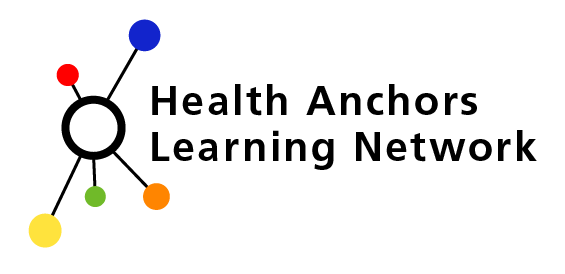Lowering the anchor: entry points and starting activities
Changing mindsets and shifting culture is at the heart of anchor work - and at the heart of participant discussion when they join HALN’s learning sets around developing anchor strategies and frameworks.
We recently welcomed the first cohort of participants with diverse expertise from trusts, ICSs, councils and voluntary groups across the UK to our first learning set session - which demystifies what it means to create an anchor strategy through:
Reviewing national and international examples of anchor frameworks which are further along
Considering different entry points and pillars of activity
Sharing strategies for engaging partners and developing shared outcomes and initiatives.
Much of the conversation centres around the cultural and human sides of anchor strategies, with one participant describing the process of changing mindsets, as opposed to focusing on individual activities, as “transformational not transactional”.
The breadth of anchor work can make it difficult to know where to start, so we help our participants find their best entry points by reflecting on their own organisations and local populations using our Getting Started tool. Although participants share a diverse range of examples, some common themes are emerging from our discussions:
1) Build on what exists and seize opportunities
Developing an anchor strategy is not about trying to ‘reinvent the wheel’, or provide all the solutions to local issues from a centralised place. Instead, start by listening: mapping where good work already exists, identifying key players and opportunities, and building your anchor strategy from there.
2) Coordinate activities into an integrated programme of work
Work which aligns with anchor missions is often not labelled as ‘anchor work’, but is distributed across different parts of the organisation. Bringing pockets of good practice under the anchor umbrella can help to initiate a more systematic and intentional anchor approach across your locality.
3) Focus on those experiencing the greatest inequalities
Identifying local needs is a crucial first step. Starting activities can be directed to areas where energy is already focused and missions can be aligned with local priorities and directed toward the people who experience the worst health inequalities. Some participants emphasise the importance of embedding a geographical, topical or population focus into their strategies early on, for instance a focus on air quality.
4) Engage local partners
Valuable partnerships can come from surprising places and be informal or formal. This is often with organisations which are not health-focused, such as businesses, arts institutions and housing associations. We hear from participants about capitalising on strong private sector networks, for instance initiating conversations with the business community about deprivation and schools. Participants take different approaches to partnership engagement. Some focus on ‘getting their own house in order’ first: engaging their organisations in anchor strategy work before bringing in partners. Others are working across an Integrated Care Partnership, or other place-based network, so face different challenges when connecting partners around an aligned set of anchor objectives.
5) Develop the right set of behaviours
Learning set participants emphasise taking a deep look at their own organisations, assessing areas such as their procurement spend and workforce diversity, with one participant signalling to the creation of their own ‘Diversity Dashboard’. Embedding culture requires strategy and substance in equal measure: clarifying shared values as well as practicing what you preach through tangible changes in line with your anchor strategy, for instance reconstructing recruitment processes to encourage local hiring. One participant describes their staff as their “first community”, taking a bottom-up approach focused on environmental sustainability, first and foremost asking their workforce what they as individuals can do and considering how their institution can support this, for instance through cycle-to-work schemes.
6) Building support among senior leaders
Buy-in at the Executive level is vital, especially when an anchor strategy is in its infancy. Having conversations with senior leadership teams is an important first step for many participants to ensure that the culture shift is embedded at the highest level. ‘Selling’ the anchor vision - to senior leadership, frontline staff and members of the local community - also requires clarifying intended shared outcomes and being really clear about what the intended benefits of the activity are.
Our learning sets run over three months and use national and international examples of anchor work as well as participants’ own challenges, ideas and experiences. Our next session looks at defining an area of focus, as well as workforce and community engagement. Keep an eye out for tools and resources on our website and social media to help you on your anchor journey, and sign up to our waitlist to be involved in the next round of learning sets.
